


© 2014-2021 Copyright by P. K. H. Groth, Denver, Colorado, USA All rights reserved - See contact page for for permission to republish article
excerpts.
Rodent Problems and Disease
What you don’t know might not annoy you, but it might kill you. I include this section on rodents which you
might encounter while elk hunting in the Rockies, but it is also pertinent to all US hunters who have a hunting
cabin or hunt where there are derelict old barns and buildings. Rodent carried diseases can be avoided if you
know the dangers and properly clean your hunt camp cabins.
Critters will attempt to relocate from fields to human habitation with the advent of cold weather. That is
abouit hunting season! This includes house mice, deer mice which can carry the deadly Hantavirus notorou
virus, and pack rats which can mess up a camp and cart off possessions. We have been plagued with rodents
in our Wyoming antelope hunting cabin. It took quite a while to understand their habits, the ways to
discourage them , and how to efectively trap them. I might as well save you some time by passing on our
experience. (Photos from Wikipedia)
House mice: (Mus musculus) are mostly associated with
human habitation. The mice vary in color, but are normally
gray in non-laboratory breeding situations. They have a
pointed snout, small round eyes and naked ears and tails.
The tails are used for precise body temperature contol, so
tails of southern mice (as shown) are longer than our
northern mice. These mice communicate with high pitch
squeaking. Both common mice and deer mice can wiggle
through a 3/8 to 1/2 inch opening (depending on age and size) and enlarge holes with gnawing as they grow.
Deer mice: (Mus peromyscus) are the most common mammal in the
US, and have a range from Canada to Mexico. They are not not
noticed much because they generally live scattered outdoors until
cold weather arrives. There are seven varieties of deer mice and only
mouse experts can distinguish the difference. The western US deer
mouse Peromyscus manicalatus typically has a two-toned body, with a
gold to mixed gold-gray top, white legs, and a distinct white belly
and white tail bottom. The tail has short hair, again with the bottom
white and a colored top appearing as a stripe. The snout is more
stubby than the house mouse
Deer mice usually remain mute, but communicate danger with coded foot thumping. They can jump three
feet and are good climbers. They are omnivorous, eating plant and animal matter - insects, worms, seeds,
nuts, flowers, fruit and even their own feces (coprophagy) if necessary. In the fall and winter they develop a
craving for fat, to the extent they will resort to consume bars of soap – even scented soap! Deer mice move
into buildings, sheds, and wood piles with the onset of winter. Favorite places to nest inside are beds and
upholstered chairs where they can use stuffing for nests. They are excellent squirmers, the young being able
to squeeze through a hole the size of a shirt button. Deer mice may have 5-11 kits 3-4 times a year; young
reach puberty in a month. Over population can rapidly occur in warm years with good extended food
supplies, delayed early frost kill, and reduced number of predators.
Deer mice infected with hanta virus do not show any signs of sickness, being immune to the virus. Some
colonies have up to 70% infected mice. Deer mice transmit the hanta virus via their blood, saliva and urine,
especially if these liquids are dried and become airborne by natural drafts or human activities like vacuming,
sweeping or shaking bedding etc. Eating contaminated food or drinking from cans whose tops have been
contaminated by urine is another transmission source. The hanta virus is believed to be viable (contractable)
on surfaces for seven to eight days.
Packrats (Wood rats, Rafter rats:) There are 17 species
of Neotoma, with expected variations in descriptions.
They are large (adults one foot or more to tail tip) with
hairy tails and somewhat small feet for their size. The
bodies are typically paunchy and sort of floppy. Ears are
dish-shaped and eyes black. Packrats build elaborate
nests (often large) using any materials available. Rats in
the wild may use cactus bases for protection, or caves,
cliff crevices or even hollow stumps. These rats readily
adapt to living around humans where they build nests in
sheds, barns, garages and cellars. They love attics and
walls if there are entrance opportunities: they are
excellent chewers to enlarge holes. While packrats are
cute and interesting animals, they can ransack a vacant cabin, neglected home or stored vehicle engine
compartment.
Packrats are the clowns of the rat family and many consider them as lovable like a hamster. They are
nocturnal miscreants, continually messing around and foraging for nest building materials and food; some
nests can become enormous with their kleptomaniac habits. They are noisy to boisterous, particularly at
night. Their urine is particularly strong and obnoxious. They tend to urinate in the same place to the extent
that artificial urine ”rock” can be created in caves over thousands of years. They are attracted to shiny objects
and will often leave an item they are carrying for something they encounter that seems better to them, hence
their name “trade rats”. (The pictured packrat was caught outside our house when a neighbor rat-proofed his
shed, which was somewhat well nested for the upcoming winter.)
Climate Historians: Packrats do not drink water, but extract moisture from their food to produce the viscous
urine of highly distinctive odor. The urine dries to form crystalline amber-colored “amberat” that crusts the rat
middens and can preserve coated vegetation for tens of thousands of years. Study of the packrat middens
can reveal climate history back to the ice ages some 50,000 years ago. Climate study in western America is
unique, because the rest of the world never had the rat historians.
USGS Senior Scientist Julio Betancourt unlocked the utility of packrat urine deposits in the 1970’s. He has
shown how vegetation responds to climatic changes by migrating if the changes are slow enough, or dying if
there is insufficient transition time. High CountryNews, Marshall Swearington, Feb. 2016
Trapping Mice and Rats
Poisons: I strongly recommend you do not use poisons. They enter the food chain when cats, dogs, birds and
other animals eat the poisoned rodents. Warfarin-based poisons that make a rodents exit a building to find
water are particulary damaging to the ecosystem. Poisons may be eaten by children. Mice and rats decaying
in buildings is not sanitary, nor is the aroma appreciated. Deer mouse urine is a lingering danger because of
the hanta virus.
Bait: Use peanut butter worked well into the trap trigger. Let the peanut butter dry 2-3 days on a paper
blotter which removes oil to make a thicker paste. This will prevent small mice and insects from licking away
the gooey butter. Packrats like fruit in the fall and winter, especially a small chunk of aromatic apple. A better
mouse trap can be devised by placing a vegetable twisty wire around the trap trigger (pull off the plastic – foil-
wrapped vegetable twisties work easier). This makes the mouse work harder to get the bait and increases
trapping success (see trap photo).
Trap placement: Place traps in a protected place or box along walls outside and insides. The box prevents
killing birds and squirrels, and reduces rebaiting if wind and rain trips traps, and trap avoidance training of
your rodent prey.
Mouse traps should be placed on newspaper or cardboard. This prevents soiling of floor with rodent feces,
blood and hazardous urine if a deer mouse is trapped. (The hanta virus is transmitted in mouse urine which
may be expelled with death and rigor mortis contractions.)
Use plastic newspaper bags as gloves and handle the trap
cautiously and slowly. Invert the plastic bag and throw out
the trap with the deer mouse; do not use it again.)
Packrats present a special problem because of their size
and their ability to learn to avoid hazards a second time
they encounter the hazard (good avoidance learners). You
have to get a packrat the first time. I recommend placing a
RAT size trap in an enclosure such as this box with an
entrance hole
cut in one end.
This leads the rat to place its
head over the trigger when it
enters, where the trap spring will instantly kill it. Being curious
animals, packrats may circle an open area trap and trigger it with
their tail or foot. Wounding a packrat may allow it to escape to its
nest, which is probably in the shed or house where you do not
want it to rot and smell. For this reason, I also recommend a thin
wire (not chewable string) attach the trap to a fixed or heavy object
so that the rat does not drag away the trap. Note: if your outside
mouse traps are missing, they may have been taken by a cat, fox,
or a packrat building a nest.
Another problem if you are in packrat country is that they steal
mouse traps for their nest. We solved that problem at our cabin by
screwing mouse traps to a wooden plank too big for the rat to
carry off. We leave several of these planks on cardboard in our
cabin when we leave for the winter, in case the mice somehow get
in. It is much easier to remove the traps together in the spring.
Wiring the bait to the trap trigger is essential. Packrats nimbly use their paws rather than their snouts to test
bait. Once again, you do not want the animal to escape and die in your dwelling.
Hunting Camps, Sheds, cabins and Barns: It is recommended people open all doors and windows and
remain outside a while to let fresh air air into little used buildings to let air and to let dust circulate out. This
will reduce the inhalation of dried deer mouse urine virus microcrystals wafted up by air currents. It also
allows mice to calmly leave which is very important. Mice commonly urinate when panicked to run fast.
(Hawks with UV light sensitive eyes can see mouse urine trails when hunting.)
There are six common ways to contract the hanta virus.
1.) Breathing in airborne mouse urine or droppings crystals/dust/particles when cleaning a shed, barn, garage
with a broom, vacuum cleaner, pitchfork or shovel which raises dust. Shed cleaning should not be done within
7-8 days (thought to be life viability span of the virus on surfaces) of the last mouse infestation. Cleaning
should be with soapy Chorlox water to prevent dust from rising.
2.) Touching the mouth or nose aftter contact with mouse urine, saliva, feces, or blood (such as after handling
traps or dead mice. Do not handle live deer mice, since a bite may transmit the virus to you.
3.) Eating food contaminated by urine, droppings or saliva of an infected mouse; dispose of all contaminated
food. Wash food can tops and bottles if they were in a contaminated area or if they were in outside storage).
4.) Being bitten by an infected mouse. Never domesticate a wild mouse as a pet, even if it seems a cute thing!
5.) Pets bringing in a mouse that is then handled so there is contact with urine, blood, feces.
6.) Hikers and campers should be careful when seeking shelter in trails helters and old buildings, especially in
low altitude areas where mice are not killed by winter cold.
How prevalent is Hanta: The hanta virus is thought to be indigenous. It was not recognized until about
twenty years ago when the deer mouse was discovered to be the host and and the virus was recognized as
the cause for historic, new reports of sporadic occurrences of a strange “new” illness. Recognition of more
cases in the US caused the US Center for Disease Control and Prevention to start monitoring cases. In the ten
years of monitoring so far, there were 690 recognized and reported cases in 35 states, or about 6.9 per year
of Hantavirus Pulmonary Syndrome (HPS)illnesses in Colorado. The fatality rate was 38%. The map below
illustrates the range of recognized hanta cases and number of people contracting hanta during the last ten
years.
Cumulative (10 year) Case Count Per State Valid as of January 8, 2016
US Center for Disease Control and Prevention
Hantavirus Pulmonary Syndrome (HPS) Cases, by
State of Reporting
Total Cases: N=690 in 35 States Not displayed: 2 cases reported with presumed exposure outside the
USA
Hanta virus symptoms: Early stage
symptoms- fever, chills, muscle aches of large
muscle groups like the hips, thighs, shoulders and
abdomen; dizziness, fatigue, nausea, vomiting,
diarrhea, general gut pains.
Advanced stage symptoms – progressive
shortening of breath, labored breathing,
increasingly faster heart and breathing rate (signs
of lungs filling with water = Hanta pulmonary
edema, resulting in death without treatment.)
There are no medical cures for the virus, so
hospital life support methods are the only
treatments.
Closing note on hanta: You may think I over
emphasize the hanta virus threat. The chances of contracting it are slim on a statistical basis. However, IF you
get the virus the consequences are great. This was “brought home” to us when a friend of our ranch hosts
died quickly after cleaning out a shed. A little caution and extra cleaning vigilance are worth preventing a
death of a buddy, child or mate; guilt from negligence lasts a lifetime.
Packrat Stories
Lost and Found Pet: Steamboat Springs, Colorado, is quite a wealthy, elite town and almost anything can
happen. A woman found a pet chinchilla and tried to return it to what must have been a grieving young
person. No one answered her newspaper ads or postings. In December 2016, she accepted the pet as hers
and took it to the veterinarian for a check up, since oddly it still had its short summer fur rather than a
luxurious winter pelt. The TV news report was not detailed enough to describe how tactfully the vet was when
he declared the valuable chinchilla to be only a lowly packrat. I can understand how the woman fell in love
with the critter. They are playful, gentle, and inquisitive and adjust to people. The photo shows a packrat
captured at our cabin by teasing it into a bucket with a piece of apple. I did not have the heart to murder the
helpless Miss, so I carted it several miles away to old coal mine ruins and released her to find a mate. We need
hearts, and we don’t need to kill everything.
Careless Hunt Clients: An outfitter near the Flat Tops Wilderness had a license that permitted one raised
wood platform for the mess tent. He related that his clients were down right inconsiderate when they took
their after dinner and breakfast coffee outdoors. They would bring back their cups, but leave spoons where-
ever to get lost. Soon there was a spoon shortage. One day the cook returned after saddling horses to find a
something trying to pull a serving ladle through a knothole in the floor. That evening they pried up several
boards and found about ten years of hoarded spoons in the rat nest – plus a trove of items that were thought
to have been lost afield, or stolen by help or clients. I seems that packrat was enamoured to just spoons,
having left forks and knives.
What is in the Wall!!! After we refurbished (rebuilt) a settlers cabin we had a bad experience. We arrived for a
planned Memorial Day week of relaxation at our remote retreat on a large Wyoming ranch. I did some
additional repairs, and set out mouse poison under the woodpile. The weather became very warm. On the
third day something arose, and it was not in a biblical story. An odd aroma began to percolate through the
plywood, tarpaper and barn wood paneling near the head of my bed. On day five it became unbearable and
on day six we were headed home. Evidently, a poisoned packrat had died in the wall and putrefied in the heat.
Now you comprehend why I warn trappers to tie the ratt rap to a large object or stake, and not to use poison!
.
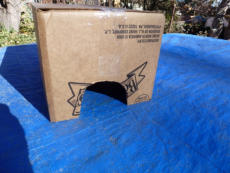
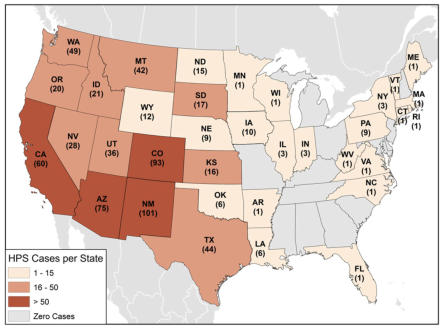
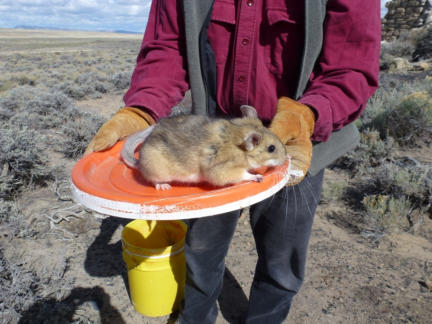
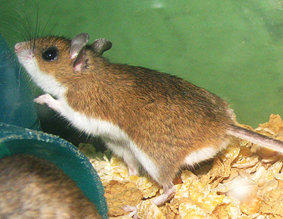
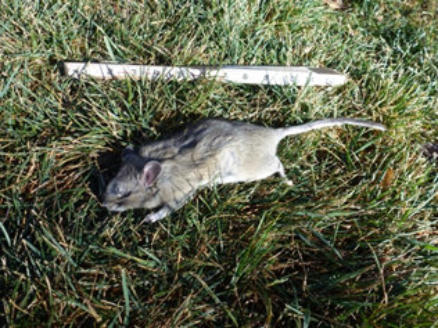
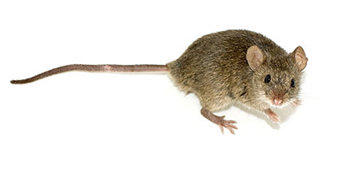
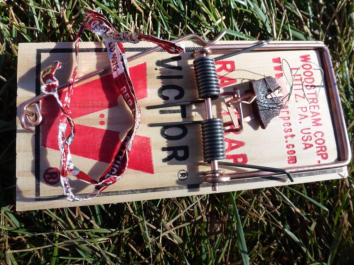
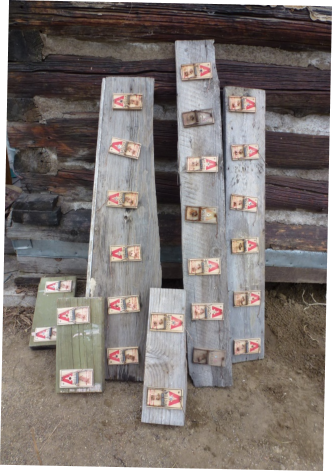




- Hunter welfare
- Hunter poster child
- Altitude sickness
- Hunter heart attacks
- Hunter heart stress
- Altitude sleep problems
- Hunter spine/bone damage
- Back country hazards
- Man made hazards
- Hunter bear attacks
- Bear problems
- Mtn lion Awareness
- Insect problems and diseases
- Hunt camp rodent problems
- Game meat dangers
- Elk meat diseases



© 2016 -2021 Copyright by P. K. H. Groth, Denver, Colorado, USA All rights reserved -
See contact page for for permission to republish article excerpts.
Rodent Problems and Disease
What you don’t know might not annoy you, but it might kill
you. I include this section on rodents which you might
encounter while elk hunting in the Rockies, but it is also
pertinent to all US hunters who have a hunting cabin or
hunt where there are derelict old barns and buildings.
Rodent carried diseases can be avoided if you know the
dangers and properly clean your hunt camp cabins.
Critters will attempt to relocate from fields to human
habitation with the advent of cold weather. That is abouit
hunting season! This includes house mice, deer mice which
can carry the deadly Hantavirus notorou virus, and pack rats
which can mess up a camp and cart off possessions. We
have been plagued with rodents in our Wyoming antelope
hunting cabin. It took quite a while to understand their
habits, the ways to discourage them , and how to efectively
trap them. I might as well save you some time by passing
on our experience. (Photos from Wikipedia)
House mice: (Mus musculus) are mostly associated with
human habitation. The mice vary in color, but are normally
gray in non-laboratory breeding situations. They have a
pointed snout, small round eyes and naked ears and tails.
The tails are used for precise body temperature contol, so
tails of southern mice (as shown) are longer than our
northern mice. These mice communicate with high pitch
squeaking. Both common mice and deer mice can wiggle
through a 3/8 to 1/2 inch opening (depending on age and
size) and enlarge holes with gnawing as they grow.
Deer mice: (Mus
peromyscus) are
the most common
mammal in the
US, and have a
range from
Canada to Mexico.
They are not not
noticed much
because they generally live scattered outdoors until cold
weather arrives. There are seven varieties of deer mice and
only mouse experts can distinguish the difference. The
western US deer mouse Peromyscus manicalatus typically
has a two-toned body, with a gold to mixed gold-gray top,
white legs, and a distinct white belly and white tail bottom.
The tail has short hair, again with the bottom white and a
colored top appearing as a stripe. The snout is more stubby
than the house mouse
Deer mice usually remain mute, but communicate danger
with coded foot thumping. They can jump three feet and
are good climbers. They are omnivorous, eating plant and
animal matter - insects, worms, seeds, nuts, flowers, fruit
and even their own feces (coprophagy) if necessary. In the
fall and winter they develop a craving for fat, to the extent
they will resort to consume bars of soap – even scented
soap! Deer mice move into buildings, sheds, and wood piles
with the onset of winter. Favorite places to nest inside are
beds and upholstered chairs where they can use stuffing
for nests. They are excellent squirmers, the young being
able to squeeze through a hole the size of a shirt button.
Deer mice may have 5-11 kits 3-4 times a year; young reach
puberty in a month. Over population can rapidly occur in
warm years with good extended food supplies, delayed
early frost kill, and reduced number of predators.
Deer mice infected with hanta virus do not show any signs
of sickness, being immune to the virus. Some colonies have
up to 70% infected mice. Deer mice transmit the hanta
virus via their blood, saliva and urine, especially if these
liquids are dried and become airborne by natural drafts or
human activities like vacuming, sweeping or shaking
bedding etc. Eating contaminated food or drinking from
cans whose tops have been contaminated by urine is
another transmission source. The hanta virus is believed to
be viable (contractable) on surfaces for seven to eight days.
Packrats (Wood rats, Rafter rats:) There are 17 species of
Neotoma, with expected variations in descriptions. They are
large (adults one foot or more to tail tip) with hairy tails and
somewhat small feet for their size. The bodies are typically
paunchy and sort of floppy. Ears are dish-shaped and eyes
black. Packrats build elaborate nests (often large) using any
materials available. Rats in the wild may use cactus bases
for protection, or caves, cliff crevices or even hollow
stumps. These rats readily adapt to living around humans
where they build nests in sheds, barns, garages and cellars.
They love attics and walls if there are entrance
opportunities: they are excellent chewers to enlarge holes.
While packrats are cute and interesting animals, they can
ransack a vacant cabin, neglected home or stored vehicle
engine compartment.
Packrats are the clowns of the rat family and many
consider them as lovable like a hamster. They are
nocturnal miscreants, continually messing around and
foraging for nest building materials and food; some nests
can become enormous with their kleptomaniac habits. They
are noisy to boisterous, particularly at night. Their urine is
particularly strong and obnoxious. They tend to urinate in
the same place to the extent that artificial urine ”rock” can
be created in caves over thousands of years. They are
attracted to shiny objects and will often leave an item they
are carrying for something they encounter that seems
better to them, hence their name “trade rats”. (The pictured
packrat was caught outside our house when a neighbor rat-
proofed his shed, which was somewhat well nested for the
upcoming winter.)
Climate Historians: Packrats do not drink water, but
extract moisture from their food to produce the viscous
urine of highly distinctive odor. The urine dries to form
crystalline amber-colored “amberat” that crusts the rat
middens and can preserve coated vegetation for tens of
thousands of years. Study of the packrat middens can
reveal climate history back to the ice ages some 50,000
years ago. Climate study in western America is unique,
because the rest of the world never had the rat historians.
USGS Senior Scientist Julio Betancourt unlocked the utility
of packrat urine deposits in the 1970’s. He has shown how
vegetation responds to climatic changes by migrating if the
changes are slow enough, or dying if there is insufficient
transition time. High CountryNews, Marshall Swearington, Feb. 2016
Trapping Mice and Rats
Poisons: I strongly recommend you do not use poisons.
They enter the food chain when cats, dogs, birds and other
animals eat the poisoned rodents. Warfarin-based poisons
that make a rodents exit a building to find water are
particulary damaging to the ecosystem. Poisons may be
eaten by children. Mice and rats decaying in buildings is not
sanitary, nor is the aroma appreciated. Deer mouse urine is
a lingering danger because of the hanta virus.
Bait: Use peanut butter worked well into the trap trigger.
Let the peanut butter dry 2-3 days on a paper blotter which
removes oil to make a thicker paste. This will prevent small
mice and insects from licking away the gooey butter.
Packrats like fruit in the fall and winter, especially a small
chunk of aromatic apple. A better mouse trap can be
devised by placing a vegetable twisty wire around the trap
trigger (pull off the plastic – foil-wrapped vegetable twisties
work easier). This makes the mouse work harder to get the
bait and increases trapping success (see trap photo).
Trap placement: Place traps in a protected place or box
along walls outside and insides. The box prevents killing
birds and squirrels, and reduces rebaiting if wind and rain
trips traps, and trap avoidance training of your rodent prey.
Mouse traps should be placed on newspaper or cardboard.
This prevents soiling of floor with rodent feces, blood and
hazardous urine if a deer mouse is trapped. (The hanta
virus is transmitted in mouse urine which may be expelled
with death and rigor mortis contractions.) Use plastic
newspaper bags as gloves and
handle the trap cautiously and
slowly. Invert the plastic bag
and throw out the trap with
the deer mouse; do not use it
again.)
Packrats present a special
problem because of their size
and their ability to learn to avoid hazards a second time
they encounter the hazard (good avoidance learners). You
have to get a packrat the first time. I recommend placing a
RAT size trap in an enclosure such as this box with an
entrance hole cut in one end. This leads the rat to place its
head over the trigger when it enters, where the trap spring
will instantly kill it. Being curious animals, packrats may
circle an open area trap and trigger it with their tail or foot.
Wounding a packrat may allow it to escape to its nest,
which is probably in the shed or house where you do not
want it to rot and smell. For this reason, I also recommend
a thin wire (not chewable string) attach the trap to a fixed or
heavy object so that the rat does not drag away the trap.
Note: if your outside mouse traps are missing, they may
have been taken by a cat, fox, or a packrat building a nest.
Another problem if you are in packrat country is that they
steal mouse traps for their nest. We solved that problem at
our cabin by screwing mouse traps to a wooden plank too
big for the rat to carry off. We leave several of these planks
on cardboard in our cabin when we leave for the winter, in
case the mice somehow get in. It is much easier to remove
the traps together in the spring.
Wiring the bait to the trap trigger is essential. Packrats
nimbly use their paws rather than their snouts to test bait.
Once again, you do not want the animal to escape and die
in your dwelling.
Hunting Camps, Sheds, cabins and Barns: It is
recommended people open all doors and windows and
remain outside a while to let fresh air air into little used
buildings to let air and to let dust circulate out. This will
reduce the inhalation of dried deer mouse urine virus
microcrystals wafted up by air currents. It also allows mice
to calmly leave which is very important. Mice commonly
urinate when panicked to run fast. (Hawks with UV light
sensitive eyes can see mouse urine trails when hunting.)
There are six common ways to contract the
hanta virus.
1.) Breathing in airborne mouse urine or droppings
crystals/dust/particles when cleaning a shed, barn, garage
with a broom, vacuum cleaner, pitchfork or shovel which
raises dust. Shed cleaning should not be done within 7-8
days (thought to be life viability span of the virus on
surfaces) of the last mouse infestation. Cleaning should be
with soapy Chorlox water to prevent dust from rising.
2.) Touching the mouth or nose aftter contact with mouse
urine, saliva, feces, or blood (such as after handling traps or
dead mice. Do not handle live deer mice, since a bite may
transmit the virus to you.
3.) Eating food contaminated by urine, droppings or saliva
of an infected mouse; dispose of all contaminated food.
Wash food can tops and bottles if they were in a
contaminated area or if they were in outside storage).
4.) Being bitten by an infected mouse. Never domesticate a
wild mouse as a pet, even if it seems a cute thing!
5.) Pets bringing in a mouse that is then handled so there is
contact with urine, blood, feces.
6.) Hikers and campers should be careful when seeking
shelter in trails helters and old buildings, especially in low
altitude areas where mice are not killed by winter cold.
How prevalent is Hanta: The hanta virus is thought to
be indigenous. It was not recognized until about twenty
years ago when the deer mouse was discovered to be the
host and and the virus was recognized as the cause for
historic, new reports of sporadic occurrences of a strange
“new” illness. Recognition of more cases in the US caused
the US Center for Disease Control and Prevention to start
monitoring cases. In the ten years of monitoring so far,
there were 690 recognized and reported cases in 35 states,
or about 6.9 per year of Hantavirus Pulmonary Syndrome
(HPS)illnesses in Colorado. The fatality rate was 38%. The
map below illustrates the range of recognized hanta cases
and number of people contracting hanta during the last ten
years.
Cumulative (10 year) Case Count Per State Valid
as of January 8, 2016
US Center for Disease Control and Prevention
Hantavirus Pulmonary
Syndrome (HPS) Cases, by
State of Reporting
Total Cases: N=690 in 35 States Not displayed: 2 cases
reported with presumed exposure outside the USA
Hanta virus symptoms: Early stage symptoms- fever,
chills, muscle aches of large muscle groups like the hips,
thighs, shoulders and abdomen; dizziness, fatigue, nausea,
vomiting, diarrhea, general gut pains.
Advanced stage symptoms – progressive shortening of
breath, labored breathing, increasingly faster heart and
breathing rate (signs of lungs filling with water = Hanta
pulmonary edema, resulting in death without treatment.)
There are no medical cures for the virus, so hospital life
support methods are the only treatments.
Closing note on hanta: You may think I over emphasize
the hanta virus threat. The chances of contracting it are slim
on a statistical basis. However, IF you get the virus the
consequences are great. This was “brought home” to us
when a friend of our ranch hosts died quickly after cleaning
out a shed. A little caution and extra cleaning vigilance are
worth preventing a death of a buddy, child or mate; guilt
from negligence lasts a lifetime.
Packrat Stories
Lost and Found Pet: Steamboat Springs, Colorado, is quite
a wealthy, elite town and almost anything can happen. A
woman found a pet chinchilla and tried to return it to what
must have been a grieving young person. No one answered
her newspaper ads or postings. In December 2016, she
accepted the pet as hers and took it to the veterinarian for
a check up, since oddly it still had its short summer fur
rather than a luxurious winter pelt. The TV news report was
not detailed enough to describe how tactfully the vet was
when he declared the valuable chinchilla to be only a lowly
packrat. I can understand how the woman fell in love with
the critter. They are playful, gentle, and inquisitive and
adjust to people. The photo shows a packrat captured at
our cabin by teasing it into a bucket with a piece of apple. I
did not have the heart to murder the helpless Miss, so I
carted it several miles away to old coal mine ruins and
released her to find a mate. We need hearts, and we don’t
need to kill everything.
Careless Hunt Clients: An outfitter near the Flat Tops
Wilderness had a license that permitted one raised wood
platform for the mess tent. He related that his clients were
down right inconsiderate when they took their after dinner
and breakfast coffee outdoors. They would bring back their
cups, but leave spoons where-ever to get lost. Soon there
was a spoon shortage. One day the cook returned after
saddling horses to find a something trying to pull a serving
ladle through a knothole in the floor. That evening they
pried up several boards and found about ten years of
hoarded spoons in the rat nest – plus a trove of items that
were thought to have been lost afield, or stolen by help or
clients. I seems that packrat was enamoured to just spoons,
having left forks and knives.
What is in the Wall!!! After we refurbished (rebuilt) a
settlers cabin we had a bad experience. We arrived for a
planned Memorial Day week of relaxation at our remote
retreat on a large Wyoming ranch. I did some additional
repairs, and set out mouse poison under the woodpile. The
weather became very warm. On the third day something
arose, and it was not in a biblical story. An odd aroma
began to percolate through the plywood, tarpaper and barn
wood paneling near the head of my bed. On day five it
became unbearable and on day six we were headed home.
Evidently, a poisoned packrat had died in the wall and
putrefied in the heat. Now you comprehend why I warn
trappers to tie the ratt rap to a large object or stake, and
not to use poison!
.


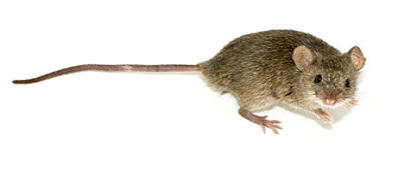




© 2016 -2021 Copyright by P. K. H. Groth, Denver, Colorado, USA All rights reserved -
See contact page for for permission to republish article excerpts.


- Hunter welfare
- Hunter poster child
- Altitude sicknesses
- Hunter heart attack
- Hunter heart stress
- Altitude sleep problems
- Hunter spine and bone injuries
- Back country hazards
- Man caused hazards
- Bear attacks
- Bear camp problems
- Mountain. lion awareness
- Insect diseases and problems
- Camp rodent problems
- Game meat dangers
- Elk diseases

























